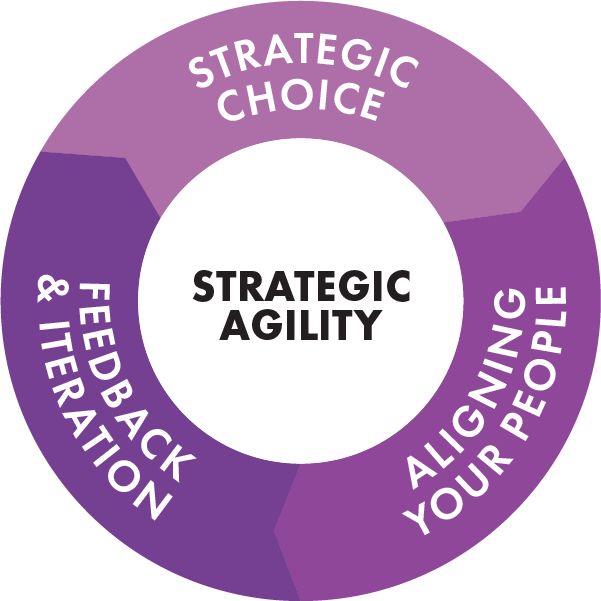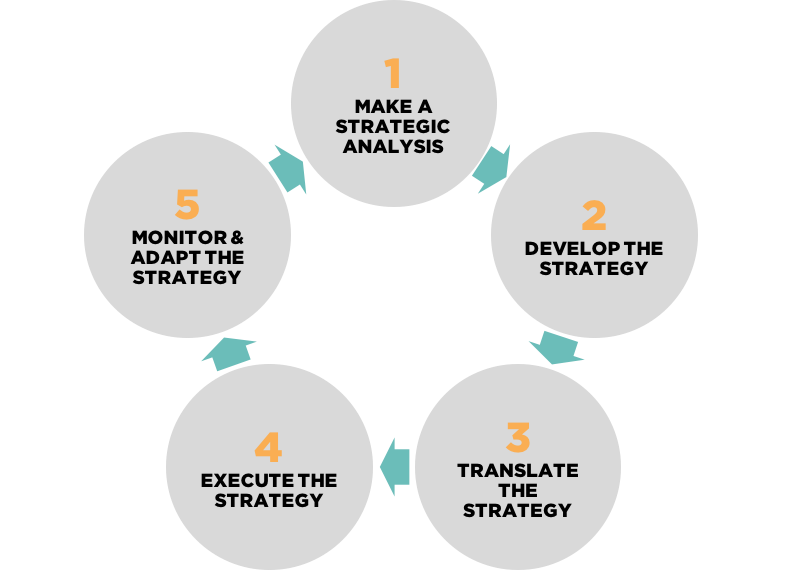In the rapidly evolving business landscape, the concept of strategic agility has emerged as a critical determinant of success.
The relentless pace of technological advancements, shifting market dynamics, and unpredictable global events have created an environment where businesses must not only be proactive but also possess the ability to swiftly adapt to change.
This is where strategic agility comes into play, a dynamic approach that enables organisations to anticipate, respond to, and capitalise on new opportunities and challenges in real-time. This article will delve even deeper into the significance of strategic agility and how it equips businesses to thrive in a fast-paced world.
Understanding Strategic Agility
Strategic agility encompasses the ability of organisations to swiftly adapt their strategies and operations in response to evolving external forces. In a world characterised by rapid technological advancements, shifting market dynamics, and unpredictable global events, strategic agility serves as a guiding principle for success.
Additionally, it empowers businesses to sense emerging trends, assess their implications, and make quick decisions to seize opportunities or address challenges. This dynamic approach fosters a culture of innovation, where employees are encouraged to challenge norms, explore new ideas, and experiment with novel approaches.
Furthermore, strategic agility promotes customer-centricity by enabling organisations to gather real-time insights and customise offerings to meet evolving customer needs. By embracing uncertainty and cultivating a culture of learning, businesses can effectively navigate the complexities of a fast-paced world.
Moreover, technology acts as a catalyst for strategic agility, facilitating real-time data analysis and fostering seamless communication and collaboration. In a world where change is inevitable, strategic agility has emerged as a linchpin that separates thriving organisations from the rest, enabling them not just to survive but to thrive amidst uncertainty.

The Fast-Paced World: Navigating Unpredictability
In today’s business world, change is not just a possibility; it’s a constant reality, and unpredictability is the new norm. Technological breakthroughs disrupt industries overnight, consumer preferences evolve rapidly, and global events like pandemics or geopolitical tensions can send shockwaves through markets.
Therefore, unfortunately, organisations that fail to acknowledge and adapt to these changes risk becoming obsolete.However, strategic agility enables businesses to sense changes early, assess their implications, and make swift decisions.
This is especially vital when seizing emerging opportunities or mitigating potential threats. An agile approach allows companies to stay ahead of the curve by recognising trends, understanding customer needs, and adjusting strategies accordingly.
Flexibility Breeds Innovation
In a fast-paced business environment, innovation is not a luxury; it’s a necessity. Strategic agility fosters a culture of innovation by encouraging employees to challenge the status quo, explore new ideas, and experiment with novel approaches.
What’s more, it recognises that traditional hierarchical structures can stifle creativity and slow down decision-making. Instead, it promotes decentralised decision-making and empowers teams at all levels to contribute to the organisation’s strategic direction.
This flexibility also extends to resource allocation. Agile organisations are adept at reallocating resources swiftly to capitalise on new opportunities. Whether it’s reallocating budget, repurposing talent, or shifting priorities, strategic agility ensures that the organisation remains aligned with its goals while embracing change.
Adapting Customer-Centric Approaches
The modern business landscape places immense importance on understanding and catering to customer needs. Strategic agility aids in maintaining a customer-centric approach by enabling organisations to gather real-time insights and adjust their offerings accordingly.
Additionally, businesses can also use data analytics and market feedback to iteratively refine products, services, and customer experiences. Furthermore, strategic agility allows for the creation of adaptive business models.
Furthermore, organisations can embrace a modular approach, offering customisable solutions that cater to individual customer preferences. This not only enhances customer satisfaction but also positions the business to pivot swiftly in response to changing market demands.
Embracing Uncertainty as an Opportunity
While uncertainty may evoke anxiety for some, agile organisations see it as an opportunity. They view uncertainty as a chance to innovate, experiment, and gain a competitive advantage. By embracing uncertainty, these organisations develop the ability to handle ambiguity and make informed decisions even in the absence of complete information.
Moreover, strategic agility encourages scenario planning, which involves envisioning various potential futures and crafting strategies to address each one. This approach equips businesses to respond quickly and effectively, regardless of which scenario unfolds. Rather than being paralyzed by the unknown, agile organisations are empowered to act confidently and decisively.

Cultivating a Learning Culture
A crucial aspect of strategic agility is the cultivation of a learning culture. This entails encouraging employees to continually expand their skills, update their knowledge, and adapt to new technologies. A learning culture fosters resilience and adaptability, ensuring that the organisation’s workforce remains well-equipped to navigate the challenges of a fast-paced world.
Additionally, this culture of learning supports agile decision-making. When employees are knowledgeable and up-to-date, they can contribute valuable insights and suggestions for strategic adjustments. This democratised approach to decision-making enhances the organisation’s ability to respond swiftly to emerging opportunities and threats.
Technology as a Catalyst for Strategic Agility
Technology plays a pivotal role in enabling strategic agility. Advanced data analytics, artificial intelligence, and machine learning empower organisations to gather and process vast amounts of information in real-time. This data-driven approach enhances decision-making by providing actionable insights into customer behaviours, market trends, and competitive landscapes.
Furthermore, technology facilitates communication and collaboration across geographies, allowing teams to work seamlessly even when physically distant. Cloud computing, project management software, and virtual collaboration tools enable organisations to quickly adapt to remote work arrangements, ensuring operational continuity even during disruptive events.
Conclusion
In a world marked by uncertainty and rapid change, strategic agility has emerged as a cornerstone of organisational success. Businesses that embrace this approach are not only equipped to survive but also to thrive amidst disruption.
By fostering flexibility, innovation, customer-centricity, and a learning culture, strategic agility enables organisations to navigate the complexities of a fast-paced environment with confidence and resilience. As the business landscape continues to evolve, the importance of strategic agility will only become more pronounced, making it an essential trait for any organisation aspiring to remain competitive and relevant.
Through a combination of adaptive strategies, technological integration, and a commitment to learning, businesses can harness the power of strategic agility to turn challenges into opportunities and uncertainty into a catalyst for growth.










